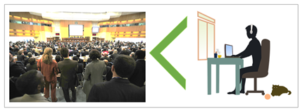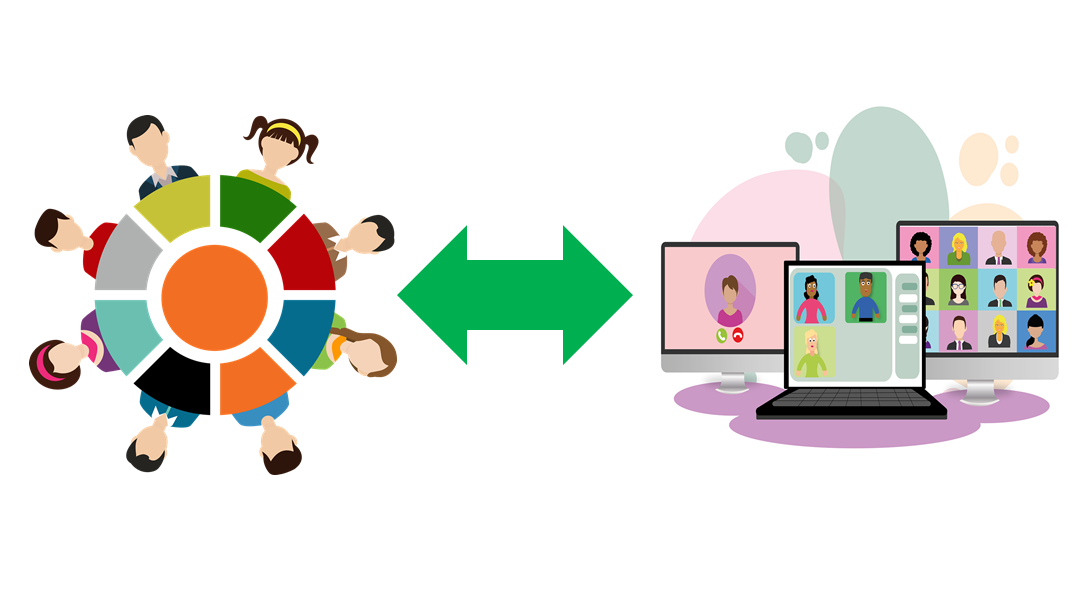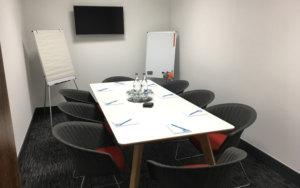Conference attendance is a core component of the journey graduate students go on, seeking to advance their knowledge and expand their network within the field of their academic pursuit. This year, unlike any other year before it, some students and early career professionals are experiencing their very first major conference participation and attendance in a virtual setting. The current global pandemic and response to it has forced many major conferences to cancel their planned in-real-life settings, and many have opted to switch these important annual gatherings to a brand new all-virtual format. This of course is a valiant effort to continue providing a platform for networking and sharing knowledge within the community.
While many of us have had the chance in previous years to attend and participate in classic conference formats, I continued to think recently while attending #BCVS20 about how is this unique virtual experience being perceived by the first time major conference attendees? The all-new format and change in typical factors that come into play when one is attending a conference, normally in an unfamiliar location in a city or country, all add up to a very novel introduction to this core component of career advancement. It would be quite illuminating to engage and discuss with a first-time attendee about this experience, and there at #BCVS20, I was lucky to know and have a chance to interview a first-timer to major conference attendance, one who also happens to be my friend and soon-to-be Master’s in Science degree holder, Ms. Supriya Hota (Twitter: @supriyahota28).
Here is a lightly edited version of the interview we conducted on webcam (Zoom meeting!), shortly after the end of the #BCVS20 meeting:
Mo: To start with a big-picture view of the experience, could you tell us how the overall experience was like, after many hours of content, over 4 days of back-to-back sessions, full of novel basic science research?
SH: If I were to summarize my overall experience in three words, it would be: thrilling, fascinating, and inspirational! My colleagues and mentors, including yourself (Blogger note: Happy to be part of the team!) have always told me great things about the AHA conferences, and I must say #BCVS20 was truly one-of-a-kind, even when it was a virtual one this year. Every day of the conference, I was able to feel the energy and enthusiasm right from my small computer screen! #BCVS20 was also a life-changing experience for me because it truly encouraged me to pursue higher education in the field of cardiovascular sciences. So here I am, looking forward to attending more conferences like #BCVS20 and networking with potential supervisors in the near future!
Mo: Focusing on the virtual format for the event, as a first-time attendee for a major international meeting, do you think the setting was adequate and sufficient in meeting your expectations and intentions for attending a meeting like this?
SH: Primarily, my expectation was to get an update of the basic science research that is happening in the field, especially in the area that I study, which focuses on the role of inflammation in heart failure. I also intended to interact with the presenters by asking questions. The virtual format was more than sufficient to meet those intentions. For example, I was able to jump from one concurrent session to the other, so that I didn’t miss a presentation I was interested in. Therefore, I leave #BCVS20 with a substantial amount of information, not only in my research area, but also other areas in the field of cardiovascular science. On top of that, accessing materials and on-line sessions was very convenient via the BCVS Heart Hub. Moreover, I was able to focus on the presentations and take note of the specific details on images or graphs via the virtual format more so than I would’ve been if I had attended the real-life conference, because either I would have been sitting too far from the screen or distracted by attendees leaving or entering the room. Also, the virtual format gave me the courage to ask questions to the presenters, because as a graduate student who is very early in her career, I would have been hesitant to ask a question in a big room full of well-known scientists. Lastly, most of the sessions were on-time, giving everyone the opportunity to discuss the scientific data and personally encourage the presenters via supportive messages in the chat window, like “Looking forward to your presentation”, “Good Luck” and appreciate the presenters’ work by saying “Fascinating work”, “thank-you for sharing your research”, which I don’t think would have been as possible in a real-life conference.
Mo: Conferences usually serve two main advances to folks that attend them, (1) acquire the newest and most cutting-edge knowledge of what’s happening in the field, and (2) expand one’s network of professional connections within the field. Do you think those two components of conference attendance were served well in a virtual format?
SH: I think the program planning committee has done an outstanding job with displaying the newest and most cutting-edge research. The virtual format has fully served this purpose. As for networking, I do not think the virtual format can ever be equal to in-person meetings. Communicating via message chat is not as engaging as face-to-face communication, which, in the virtual format, might also be a limitation to some people for various reasons, (e.g. they might not have a working camera, they don’t feel comfortable engaging with other attendees from home, etc.). Despite these drawbacks of the virtual format, I think the planning committee and the early career committee have made a significant effort in providing networking opportunities to the attendees. At the same time, most attendees have made good use of those opportunities.
Mo: Follow up – Do you think paring and amplifying social media engagement between conference attendees (and organizers) can help with filling-in some of the networking gaps that precipitate by the virtual format compared to in-person meetings?
SH: I am in full support of amplifying social media engagement because it does assist with networking in a convenient way. For example, I saw that many presenters are actively recruiting talented individuals for open positions in their research programs. What would be a faster way to advertise for this position in the scientific community other than social media? I was disappointed every time some principal investigators were not on social media (Twitter). Even though I could tweet exciting facts about their research, I am still unable to engage with them one-on-one and it will not benefit them in return because others cannot follow their research. Therefore, social media, especially Twitter, assists in promoting one’s research to those who were not able to attend the conference and to the rest of the scientific community. I think social media and its ability to privately message individuals fills in a gap as well, because it gives the attendee the comfort and privacy to have a conversation with another attendee, which is not possible in the chat window of a virtual format where hundred others are listening or using the same message chat box.
Mo: Some of the advantages of virtual meetings include ease of access, lower financial commitments, increased diversity of participants and content being shared at those meetings. Would you say these advantages are persuasive enough for you to recommend this experience to another potential first-timer attending a major conference?
SH: I would definitely recommend BCVS to other potential attendees. As mentioned earlier, the two main purposes of conferences are to acquire the newest and most cutting-edge knowledge in the field, and expand one’s network of professional connections, which the #BCVS20 provided to its attendees. In addition, for sure the lower financial commitments and ease of access due to virtual format are persuasive enough for international graduate students like me to attend.
Mo: Any other comments or advice to give to future conference attendees that have a virtual meeting coming up on their calendars?
SH: I would recommend the following to future virtual conference attendees:
Before the start of the conference:
- Create your own schedule for the conference, outlining the sessions you will be attending and when you will have breaks (very important! virtual conferences, like in-person meetings, can still be tiring.)
- Make sure that your computer is connected to a working camera and microphone and has all the necessary plug-ins and applications installed for you to watch and participate in the online sessions.
- Take the time to explore the Home Page from where you will access all the materials, on-line sessions, and on-demand options.
On the days of the conference:
- Actively take notes – this prevents you from getting distracted!
- Ask questions and/or provide a supportive or appreciative comment on the presenter’s work (that’s the least you can do)
- Tweet about the presentation that fascinates you (Don’t forget to mention and follow the presenter!). Try to make your tweet intriguing by stating takeaways and attaching eye-catching scientific diagrams and results from the presenter’s talk, when allowed.
After the conference:
- Organize your notes and create a recap or summary to share the valuable knowledge with your team.
Mo: Thank you so much for this illuminating discussion! And I look forward to attending more conferences where we get a chance to chat and share how those experiences translate to our common goal of advancing our professional career journeys.
“The views, opinions and positions expressed within this blog are those of the author(s) alone and do not represent those of the American Heart Association. The accuracy, completeness and validity of any statements made within this article are not guaranteed. We accept no liability for any errors, omissions or representations. The copyright of this content belongs to the author and any liability with regards to infringement of intellectual property rights remains with them. The Early Career Voice blog is not intended to provide medical advice or treatment. Only your healthcare provider can provide that. The American Heart Association recommends that you consult your healthcare provider regarding your personal health matters. If you think you are having a heart attack, stroke or another emergency, please call 911 immediately.”






